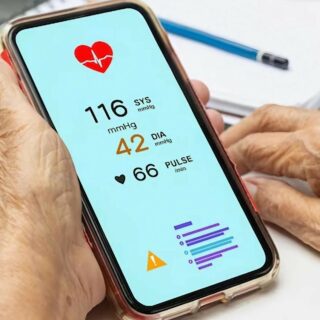
Technology continues to revolutionize the way medical services are delivered because it only talks about the dynamic landscape of today’s healthcare system. In recent years, a significant advancement that has garnered attention is ‘’Remote Patient Monitoring (RPM).’’
From transcending traditional healthcare boundaries to offering effective and proactive solutions for both patients and healthcare providers, this article will help you get into the depth of RPM, which focuses on its pivotal role in pediatric care.
In today’s world the transformative approach which is known as Remote Patient Monitoring (RPM) is at its core that actually empowers healthcare providers to monitor patients’ health conditions from a distance. RPM transmits and collects crucial health data through cutting-edge technology to healthcare professionals.
From enabling to track a patient’s well-being in real-time to coming up with the ability to continuously observe health metrics without confinement, a hospital setting has now come up with a new era of patient care.
Introducing a fresh dimension to this arena. We have seen how RPM offers continuous observation without disrupting a child’s normal environment. So we at least know that Paediatric care demands meticulous and timely interventions.
Similarly, they may find hospital stays distressing because this is particularly crucial for children.
It may be noted that healthcare providers can closely monitor vital metrics like heart rate, that providers can closely monitor vital metrics like heart rate, oxygen saturation, and other symptoms such as fever in real-time. Contributing to improved outcomes, this proactive approach actually has an impact and makes the physicians identify potential issues early and provide timely medical interventions.
Something that came to the forefront of public consciousness was the global pandemic that brought healthcare into what it is now. Providing effective medical care, also talks about the importance of finding ways to minimize physical contact in terms of curbing the spread of the virus.
In this context, we can say that RPM emerged as a hope. From monitoring patients from a distance to reducing the risk of exposure. RPM offered a way to maintain essential healthcare services by enabling healthcare providers.
The appeal of RPM extends across various aspects and is multifaceted on the grounds of healthcare delivery:
Let’s delve into the proactive realm of healthcare enabled by Remote Patient Monitoring (RPM). Imagine healthcare that anticipates issues before they arise. It has also been learned that with RPM the healthcare providers are shifting from reacting to situations to easily managing them.
If we talk about the Chronic conditions that demand consistent attention, we all know that RPM offers a lifeline for individuals facing these challenges. RPM becomes a supportive companion, no matter what. Be it in terms of regular check-ins and data collection or even if it’s about eliminating the need for frequent in-person visits, it remains a priority.
Well, that’s not it, think about the impact of reduced hospitalizations. By vigilantly tracking patients’ health remotely, RPM can play a pivotal role in identifying potential complications early on. This proactive stance not only eases the strain on healthcare systems but also improves patient outcomes by minimizing the need for hospital stays.
Next is considering the power of personalized care. Here the RPM generates a stream of real-time data that healthcare providers can meticulously analyze. This data becomes the basis for crafting treatment plans that are made to meet each patient’s unique needs. Let me be very transparent, the marriage of data and healthcare expertise ensures that every care decision is fine and tuned for maximum effectiveness.
Let’s not forget the patient experience. Picture the convenience of remote monitoring—a world where routine check-ups no longer necessitate travel and waiting rooms. RPM offers exactly that. Coupled with the reassurance of consistent monitoring, this newfound convenience transforms the patient journey into a smoother and way more reassuring experience.
To level the healthcare playing field, RPM has the potential as you can also imagine it as a bridge that closes gaps in access. And now with RPM, especially for those residing in remote or underserved areas, quality care reaches every corner which also ensures that health equity becomes a reality.
It may be mentioned here that at the forefront of the RPM revolution is Health Wealth Safe (HWS) and its innovative RPM software.
The RPM can be a transformative step towards enhancing patient care, especially for physicians. Opening doors to a new level of medical practice, the partnership with Health Wealth Safe HWS where proactive monitoring complements where there is clinical expertise. By incorporating RPM into their practice, physicians can:
It is very important and very much into it as potential continues to expand, as RPM garners attention and swift adoption, The pandemic may have been the benefit of remote patient monitoring but it also was a catalyst to some extent far beyond crisis management.
With ongoing advancements in technology, healthcare, and data security as well as integration, RPM holds the promise of transforming which is delivered on a global scale. To redefine patient care and well-being in ways, the collaboration between technology and medicine is poised that was once only imaginable.
Become a Partner
Support
Portals